For more detail on how the life cycle processes from each guide compare, download the Praxis comparative glossary.
Project and programme management are well served with bodies of knowledge and methods that provide a framework for managing a project. Much is said about their different structures but are they really that different?
This article compares the underlying life cycle of several guides to illustrate that they are not as different as they may appear at first glance.
First of all we need some sort of generic baseline against which to compare. The diagram below is taken from the Praxis Framework that uses very simple descriptive terms to illustrate a 5-phase life cycle.

In simple linear terms: you have an initial idea which you use to identify outline the cost, risk, timescales and predicted benefits. If that looks promising, you work on a more detailed definition; if it still looks OK, you start on the delivery and produce an output. You close down the project and the customer uses the output to generate benefits.
Of course, it isn’t usually that linear or straightforward, but we need a place to start the comparison.
We’ll look at five guides to see how they address this life cycle. The simplest comparison is with the Association for Project Management (APM) Body of Knowledge v6.
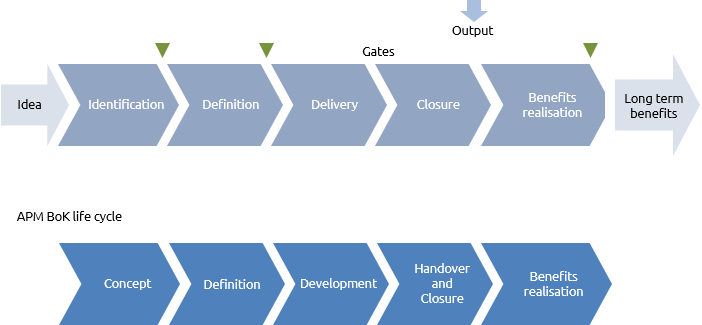
In this case there is a one-to-one relationship between the phases and, apart from the phase names, the two life cycles are the same.
Now the comparisons need a bit more interpretation because guides such as PRINCE2®, Managing Successful Programmes and the Project Management Institute’s PMBoK Guide® take a process approach to the life cycle.
Once again, Praxis Framework is useful as a benchmark because it carefully maintains the same naming conventions for the life cycle and the processes used to manage it.
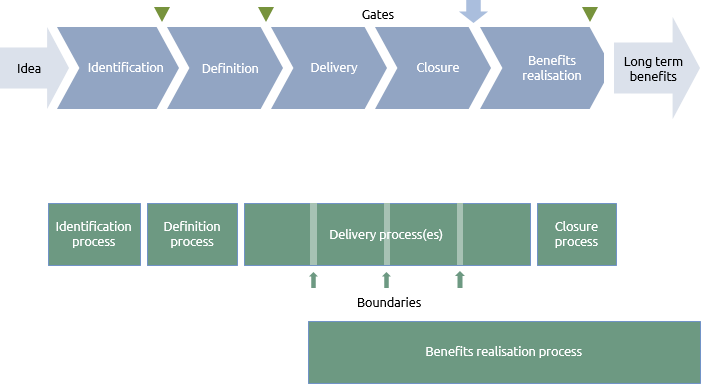
Each life cycle phase has a corresponding management process. The only difference here being that delivery is broken down into stages and benefits realisation is more realistically shown as something that runs partly in parallel with the delivery process.
The most popular methodology for projects is PRINCE2. Is this any different?
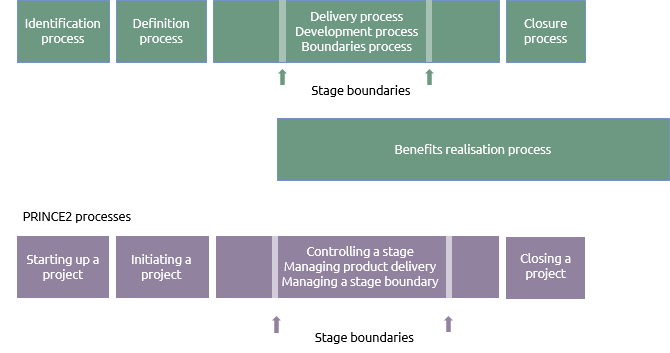
In this diagram, we have shown that the delivery process actually combines three processes: the overall co-ordination of the delivery phase, the physical creation of products and the management of boundaries between development stages.
Apart from the names, the arrangement of processes in PRINCE2 is the same – with the one exception that PRINCE2 doesn’t cover the realisation of benefits, which it leaves to the Managing Successful Programmes methodology (but more of that later).
And so to the PMBoK Guide. At first sight this looks quite different with its matrix of knowledge areas and process groups. The trick here is to look at the ‘Project Integration Management’ knowledge area as this shows the processes used to manage the project life cycle.
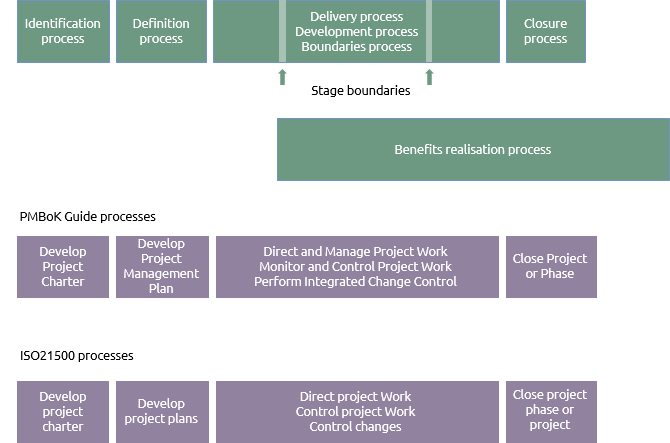
At a detailed level the PMBOK Guide’s Integration Management processes take a different approach. For example, the closure process doubles up as a project closure process and a stage closure process – but that’s detail, fundamentally the management of the life cycle follows the same principles as Praxis and PRINCE2 (as with PRINCE2, the PMBoK doesn’t include benefits management in the project life cycle).
Since ISO21500 is closely based on the PMBoK Guide’s process model the same principles apply.
These simple comparisons show that most guides adopt the same generic life cycle when designing processes to manage a project. But what about programmes, surely they are different? Not really, let’s look at the Managing Successful Programmes (MSP) processes.
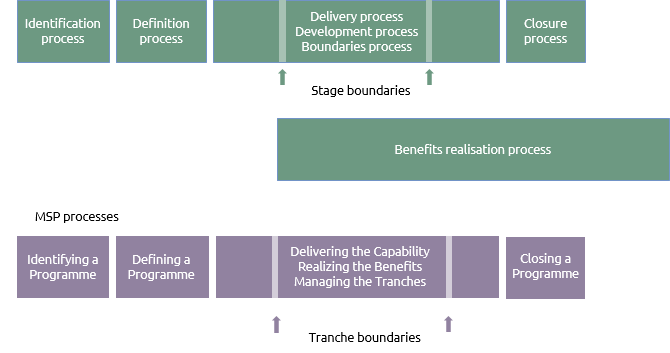
Despite the fact that we are talking about tranches instead of stages and now including a process for benefits realisation, the principle phases of the life cycle are the same. In fact when you compare PRINCE2 and MSP in detail, you wonder why we need to separate guides at all. They could easily be combined with a single process model, adaptable to the needs of project and programme contexts while retaining much of the common good practice. Which is exactly what the Praxis Framework does.
The moral of this story is that you shouldn’t get hung up on the perceived differences of structure in the various guides. Fundamentally, they are all based on the same underlying life cycle. Once you understand the basic concept you should be able to adapt to the use of any guide. Focus on the similarities first and then understand the differences.
- PRINCE2® and Managing Successful Programmes are published by Axelos Ltd.
- The Guide to the Project Management Body of Knowledge (PMBoK Guide®) is published by the Project Management Institute.





